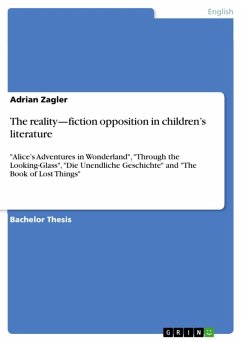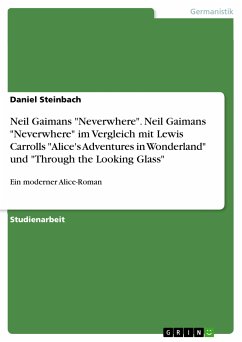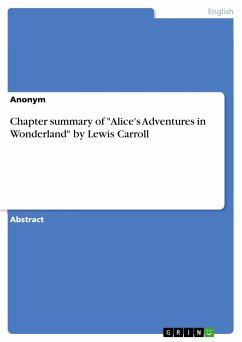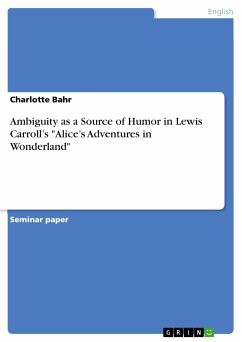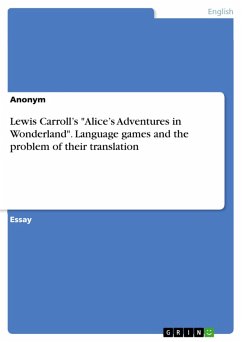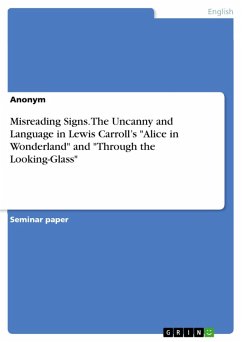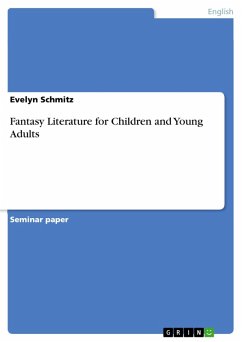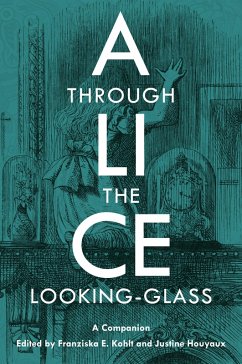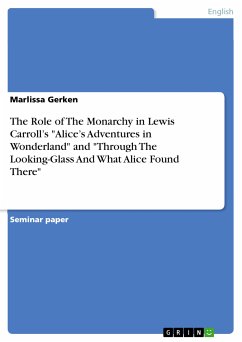
The Role of The Monarchy in Lewis Carroll's "Alice's Adventures in Wonderland" and "Through The Looking-Glass And What Alice Found There" (eBook, ePUB)

PAYBACK Punkte
0 °P sammeln!
Seminar paper from the year 2003 in the subject English Language and Literature Studies - Literature, grade: 2,0, Saarland University, language: English, abstract: In Lewis Carroll's classics, Alice's Adventures in Wonderland and Through the Looking-Glass, kings and queens appear embodied in animated playing cards and chessmen. But are they really only "a pack of cards" (Carroll 72) and ordinary chess figures in the eyes of Alice, the heroine of the two books, or does she take them seriously? And if she takes the kings and queens seriously, why doesn't she always treat them as adult-authoritie...
Seminar paper from the year 2003 in the subject English Language and Literature Studies - Literature, grade: 2,0, Saarland University, language: English, abstract: In Lewis Carroll's classics, Alice's Adventures in Wonderland and Through the Looking-Glass, kings and queens appear embodied in animated playing cards and chessmen. But are they really only "a pack of cards" (Carroll 72) and ordinary chess figures in the eyes of Alice, the heroine of the two books, or does she take them seriously? And if she takes the kings and queens seriously, why doesn't she always treat them as adult-authorities as one might have expected from a Victorian girl? The idea suggests itself that it was Carroll's intention to draw a satirical picture of the Victorian monarchy because Queen Victoria's popularity was no longer at it's height when he wrote the Alice books. But according to the author himself, his chief motive was to "please a child (he) loved" (Carroll, AotS). Here Lewis Carroll is referring to a girl named Alice Liddell to whom he told Alice's adventures before he later wrote them for publication. Indeed, Lewis Carroll had an exceptional knowledge of the child's mind and could thus create a unique fairytale, as the author himself calls his narrative, which is still considered a children's classic today. How do the kings and queens in the two Alice books then contribute to the success of Carroll's works of Alice and Wonderland and Through The Looking-Glass?
Dieser Download kann aus rechtlichen Gründen nur mit Rechnungsadresse in A, B, BG, CY, CZ, D, DK, EW, E, FIN, F, GR, HR, H, IRL, I, LT, L, LR, M, NL, PL, P, R, S, SLO, SK ausgeliefert werden.




